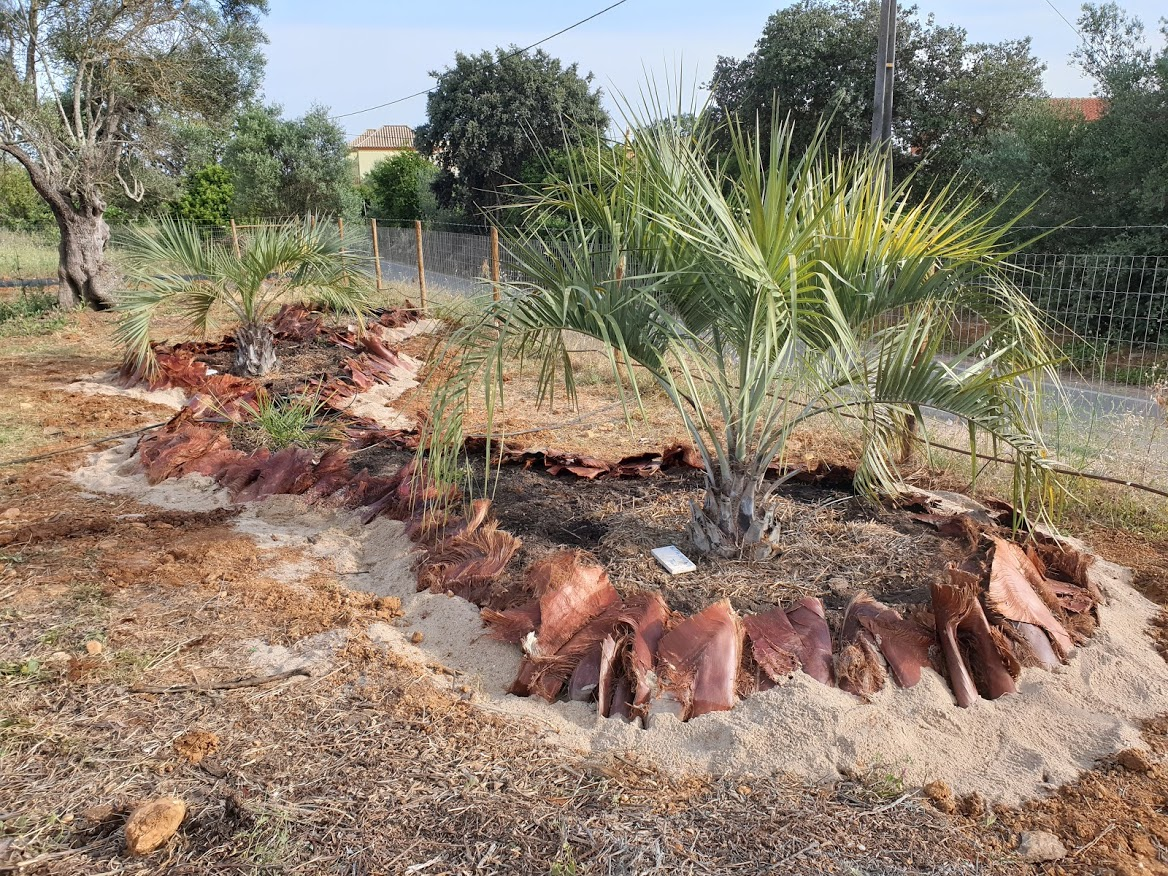Mulching Techniques
A proper mulch maintains the integrity of the soil beneath it, protecting the earth from drying out under the sun or keeping warmth in when it is cold. Mulching prevents weeds, provides habitats for useful insects and microorganisms, moderates soil temperatures and prevents erosion. The correct types even feed the soil as it decomposes.
Keep in mind where your mulch comes from and the energy requirement to make the mulch, We prefer to to use more locally sourced products, however we understand that for many reasons including practicality and maintenance requirements sometimes we choose to source products where we believe the longevity advantage outweighs the disadvantage of not being produced locally.
Below we will talk about some of the techniques we use, the advantages, and the disadvantages.
So many types of mulching:
Chop and Drop
The small branches and pruning material from our more mature trees, bananas and our vetiver can produce quite a lot of mulch.
Advantage: Produced onsite and direct composting, no need of a wood chipper, good fertilizing value
Disadvantage: not possible with thick branches which require a wood chipper.
Living Mulch and ground cover plants
We are trialling many different ground covers at Orchard of Flavours which work to crowd out weeds, stabilise the soil, and add nutrients to the soil as they lose their leaves and create their own environment. Good creeping flowers: Trachelium caeruleum, Lantana montevidensis, Potentilla neumanniana, Dymondia repens, Achillea,...
Advantages: Long lasting, add colour and variety and can attract pollinators.
Disadvantage: may require extra maintenance, pruning, extra requirements or invasiveness characteristics.
Biological Mulching Felts
Made of vegetable fibers, coco coir, paper and other biodegradable materials, these can be a good option in situations of high weed pressure, where constant maintenance is not possible or would like to be limited. Price ranges from 50c to €2 per square meter.
Advantage: Longevity
Disadvantage: Produced offsite, can be damaging for plants which require little water.
Non biodegradable Mulching Felts
Made of synthetic fibers, they are the most effective option in situations of high weed pressure, where constant maintenance is not possible. Price ranges from 50c to €2 per square meter.
Advantage: Longevity, great weed killers if kept for a few months
Disadvantage: Produced offsite, non biodegradable
Straw Mulch
A very common option, readily available and with the possibility to be produced onsite. You will need to use very thick layers of straw (minimum 10 cm thick).
Advantage: Cheap, very effective to keep the soil moist
Disadvantage: not often organically produced, can attract rodents, short longevity (usually a few months), little fertilizing value.
Shredded Wood
With a wood chipper, you can shred branches and it will result in wood chips. For thick branches (more than 5 cm), you will need a professional wood chipper which can be very costly and requires high maintenance.
Advantage: easy to apply, excellent for humus creation, good barrier for weeds if applied generously (min 10 cm).
Disadvantage: Requires high energy input (wood shredding), depending on types of plants shredded this could bring undesirable species, possibility to alter the pH (pine bark).
Jute bags
Known as hessian, burlap or jute bags, a byproduct of the coffee industry. Can be found cheap, free or resold. We noticed in our situation to avoid weeding we need to use two layers of bags.
Advantage: easy to apply, quite effective
Disadvantage: quite costly (around 50 cents for one bag), needs a second layer of mulch to avoid being blown away with the wind (gravels, sand, compost,...)
Cardboard
Free in most cases, remove any plastic or tape before using. It can be used for a base layer when constructing a lasagne style garden or natural path, or as a top layer to suppress weeds for a longer period.
Advantage: very cheap, very easy to install
Disadvantage: ugly and easily blown away by wind if not covered with another type of mulch, longevity depending on your area rainfall.
Tips when Mulching
Observation is key! Always know the moisture requirements of your soil/plants.
Mulch helps to regulate moisture loss. However, this may be a problem for certain soils that remain wet already or for trees which require a more dry environment for their roots. Some plants may thrive on the extra moisture!
After dry weather, the opposite problem may occur. The mulch may make it difficult for rain or irrigation to penetrate depending on the technique used eg. felts, cardboard, and thick mulch.
Do not apply thick mulch too close to the trunk of trees!
Mulch applied too close to the base of trees can cause an undesirable environment, promoting rot or disease/softening of the root collar or an easy way for moisture loving pests to enter.


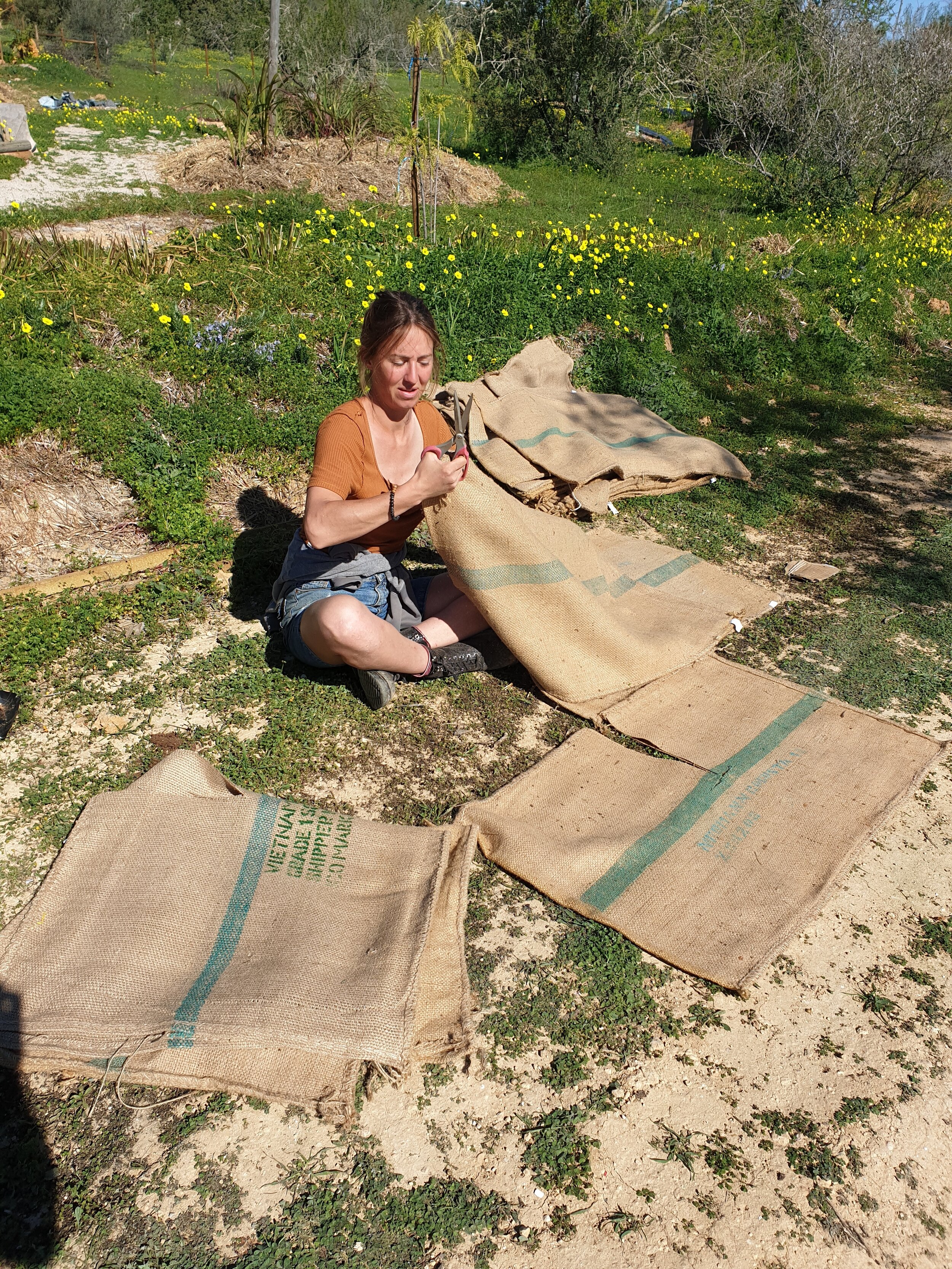
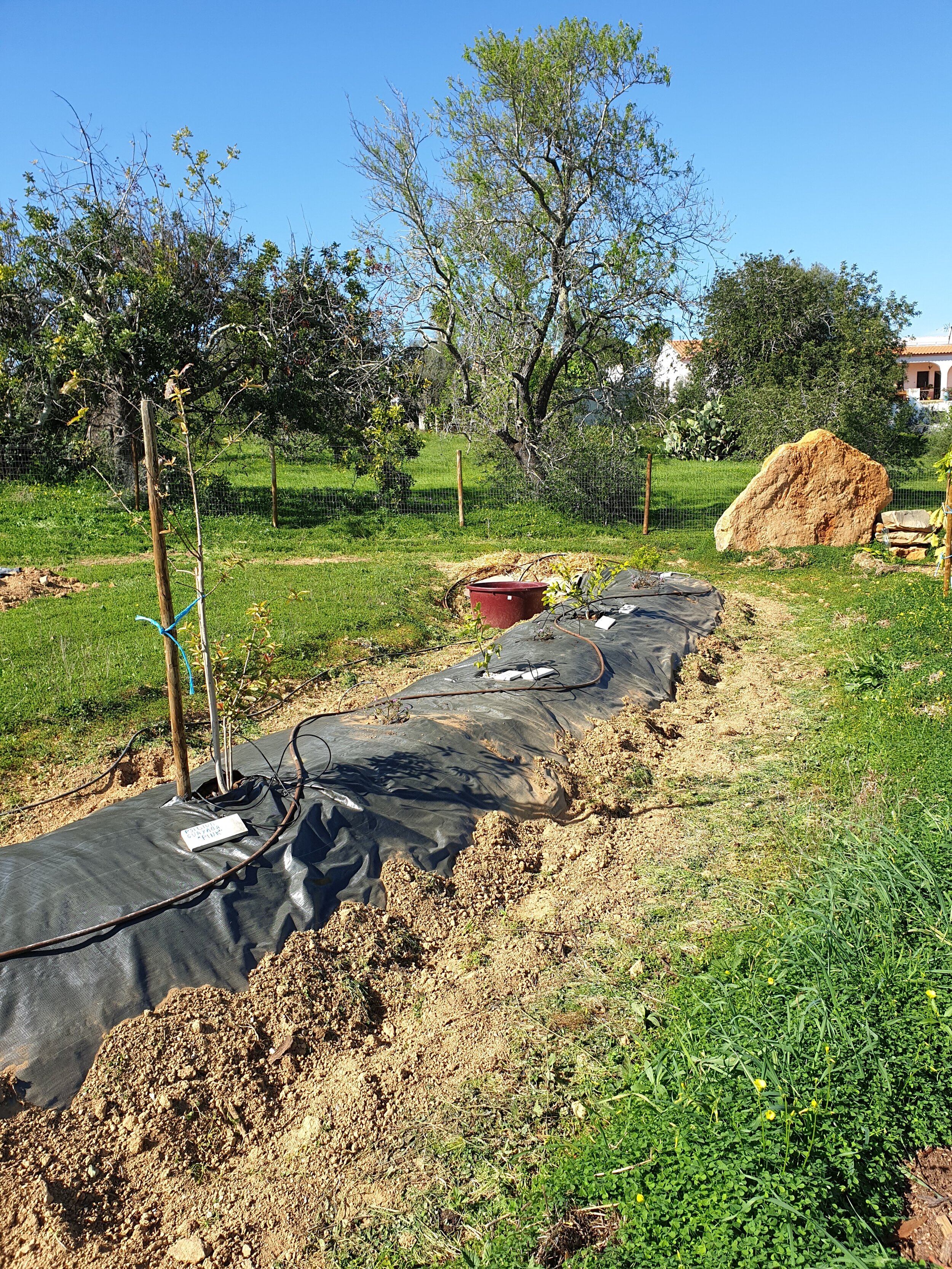
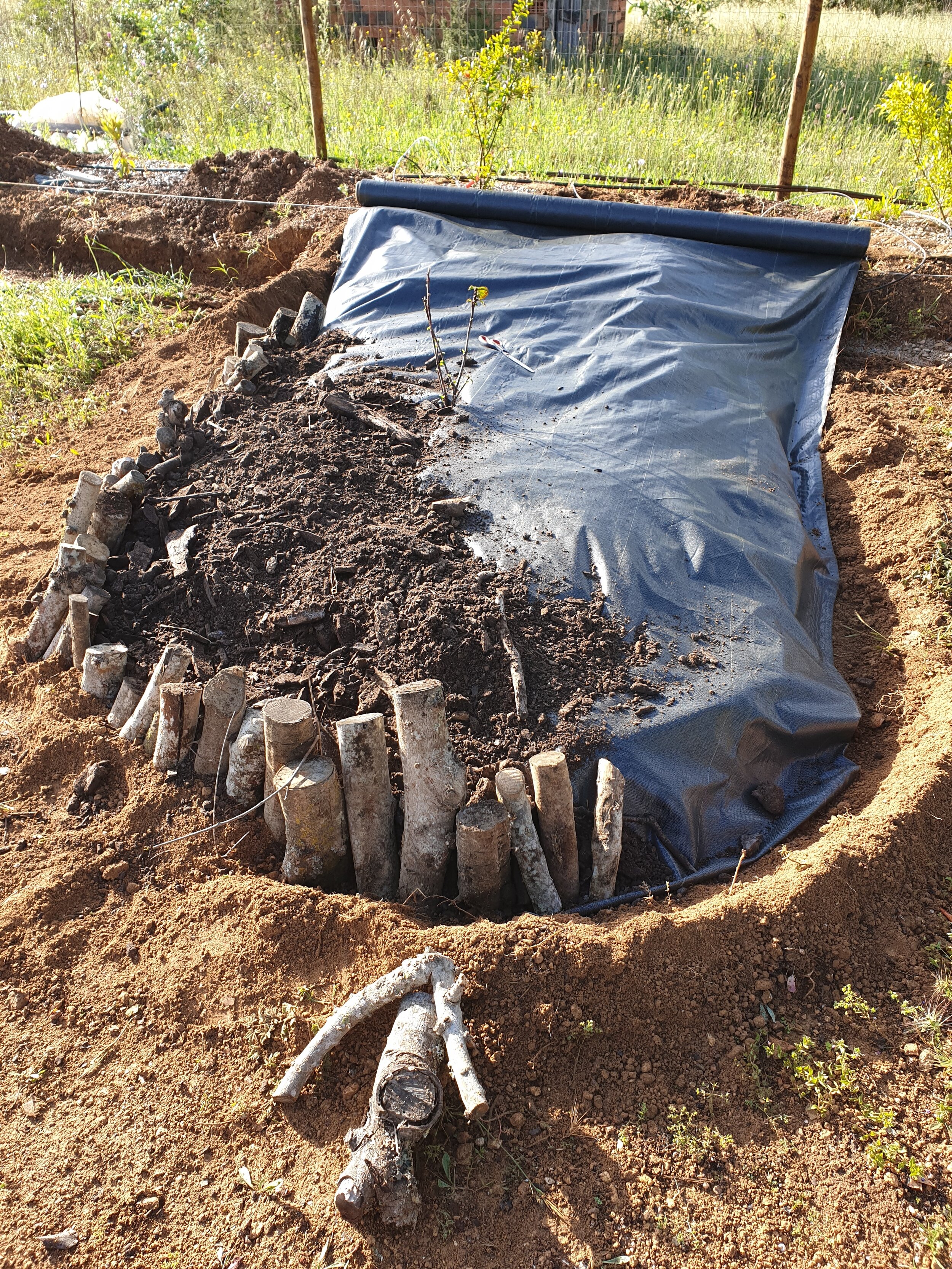
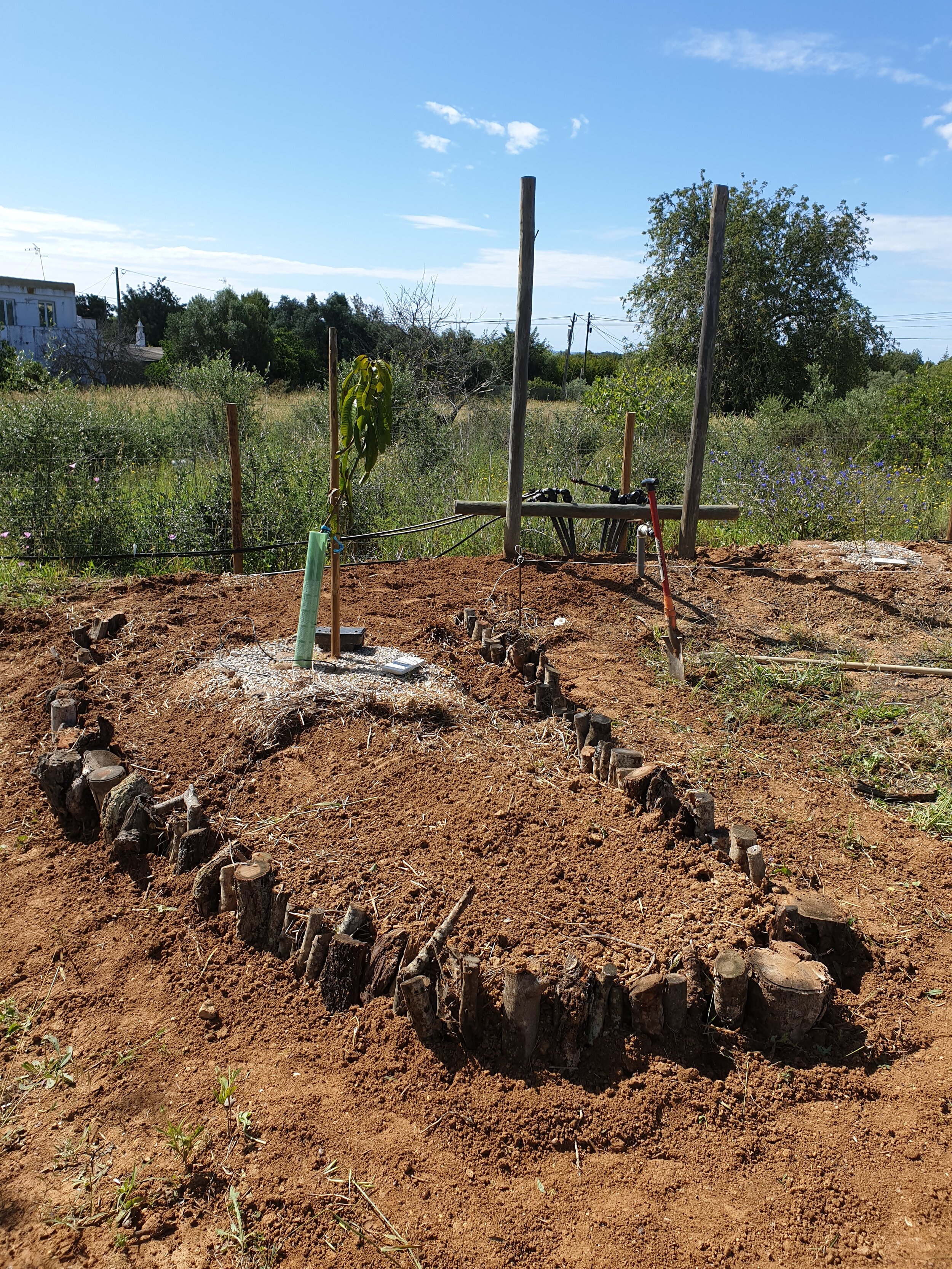
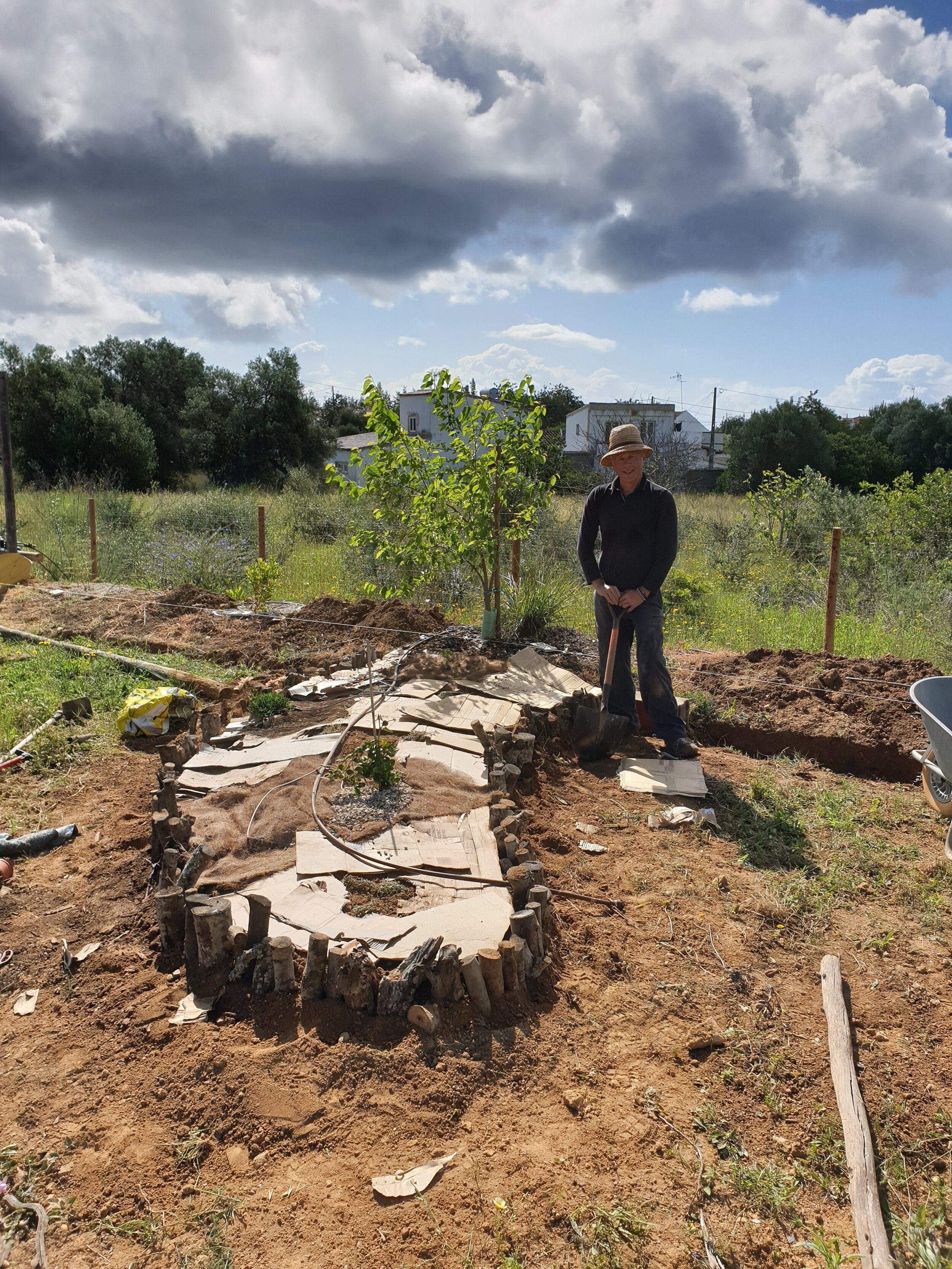

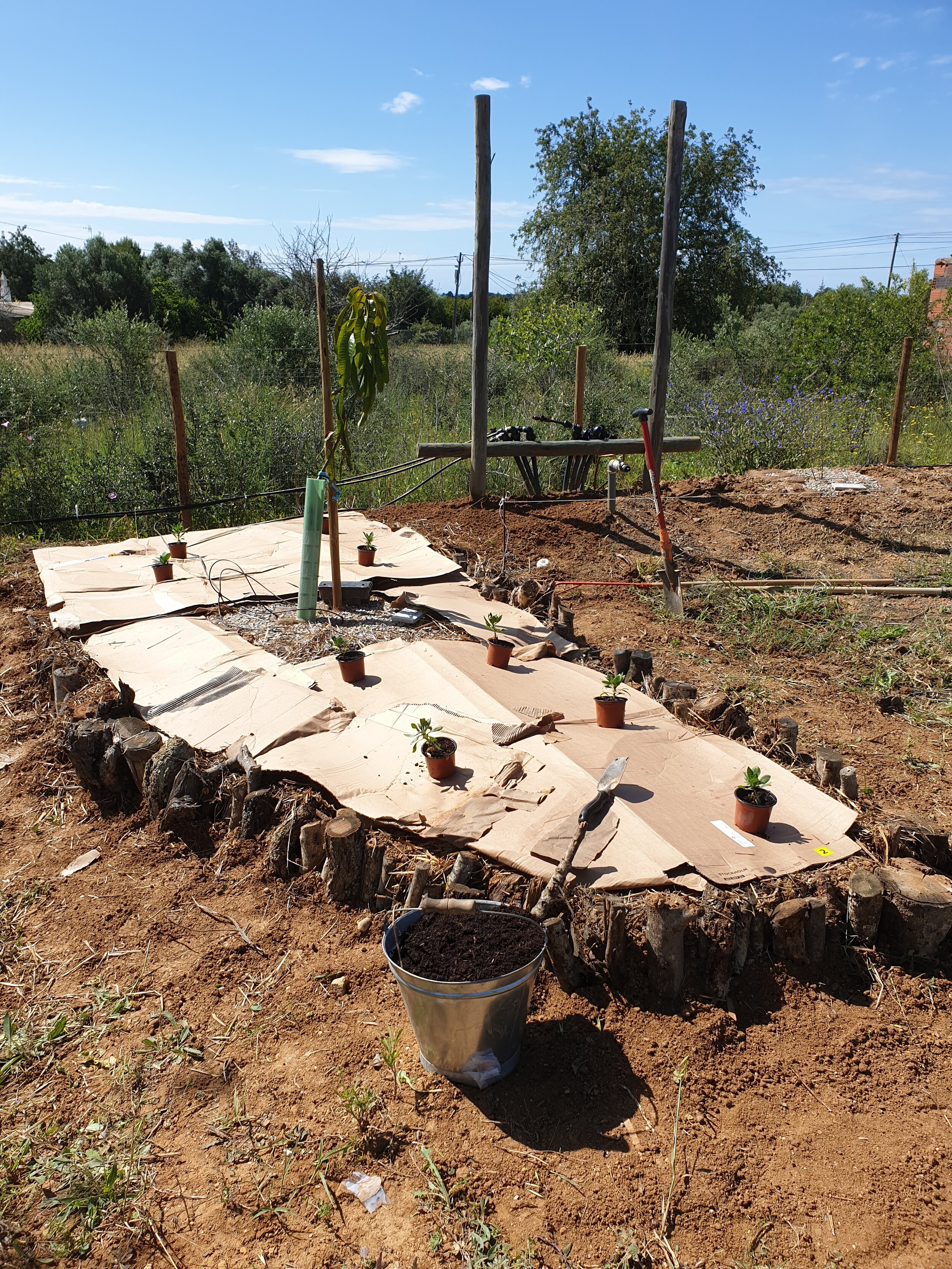
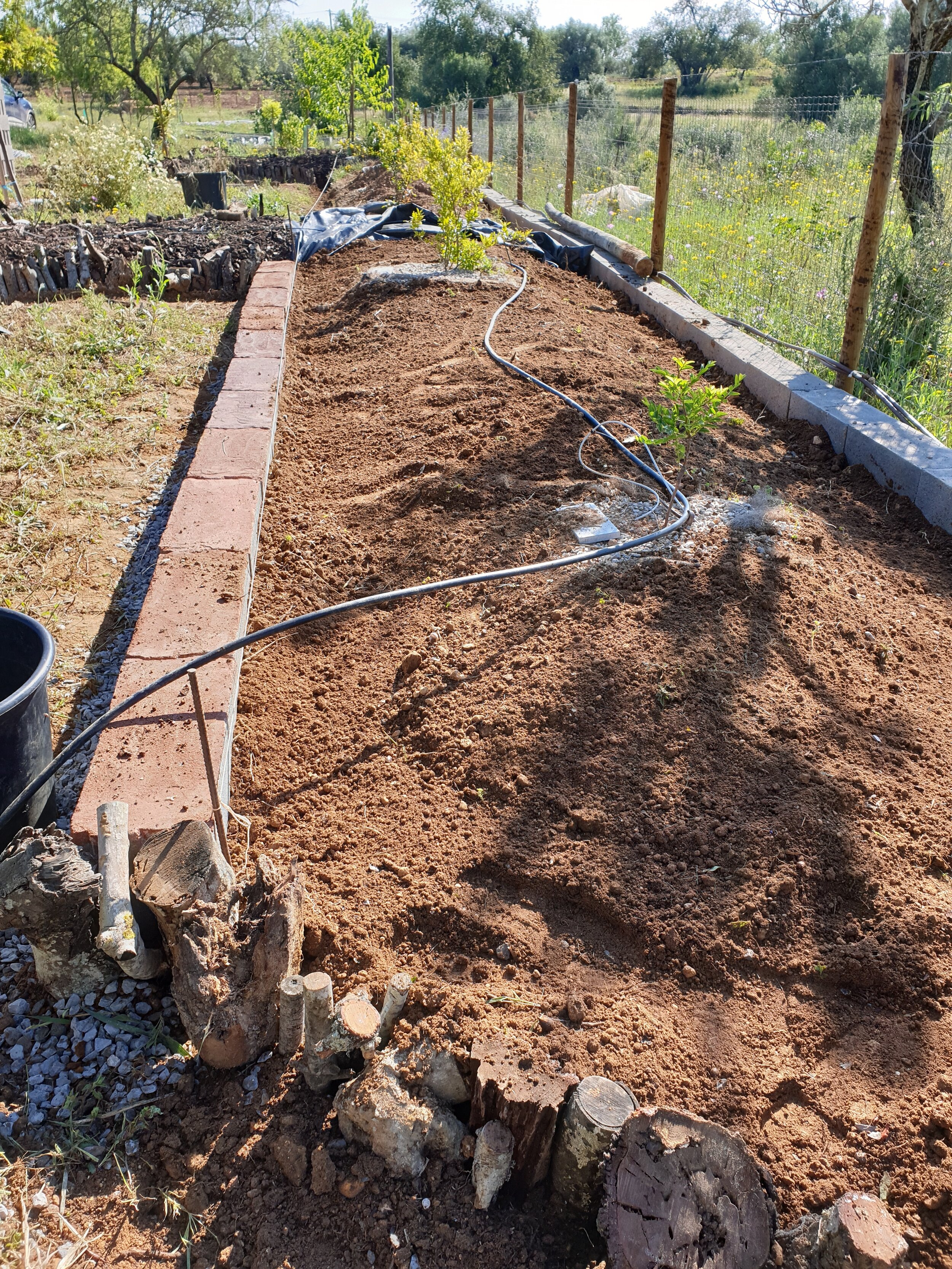
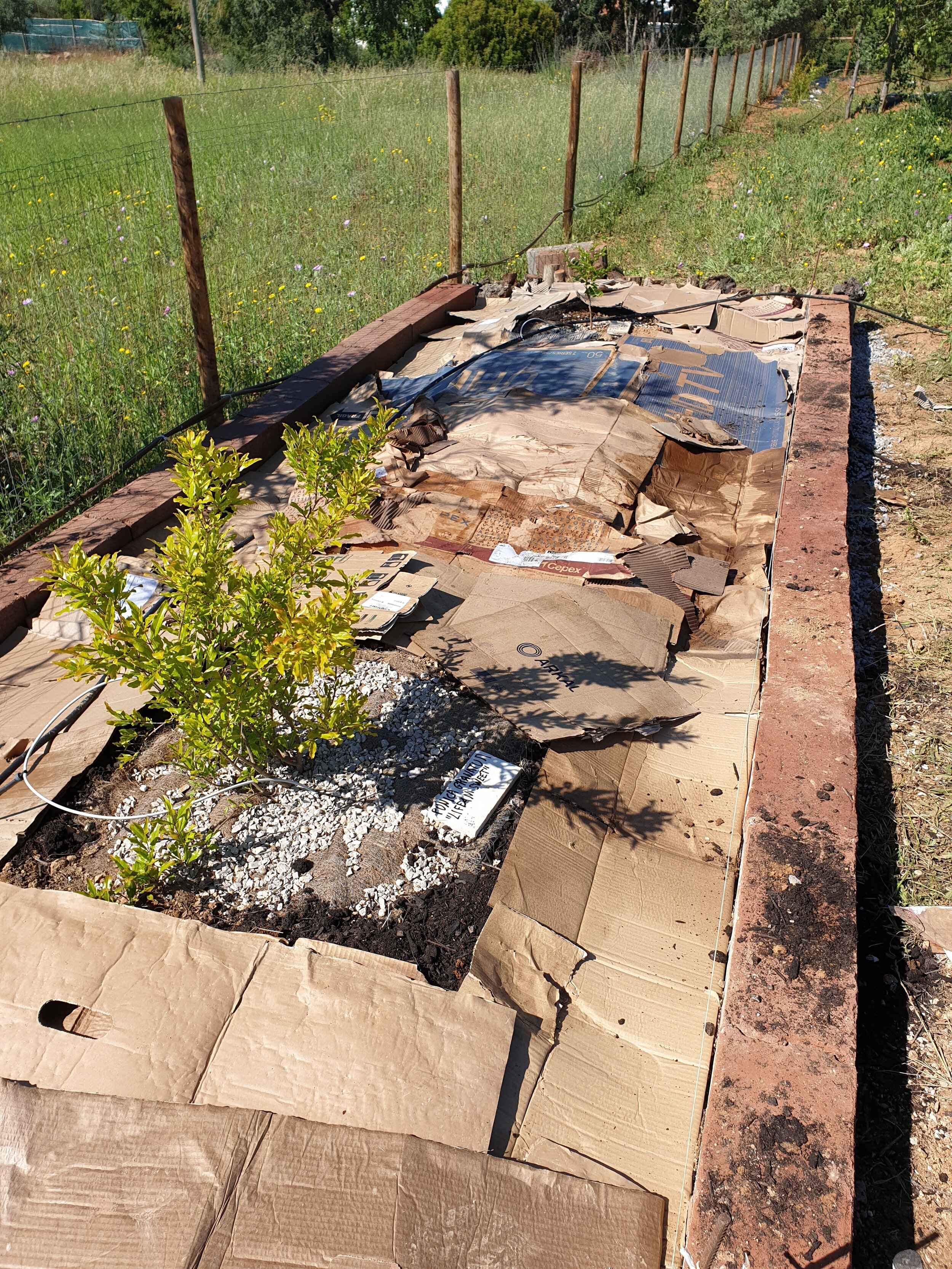
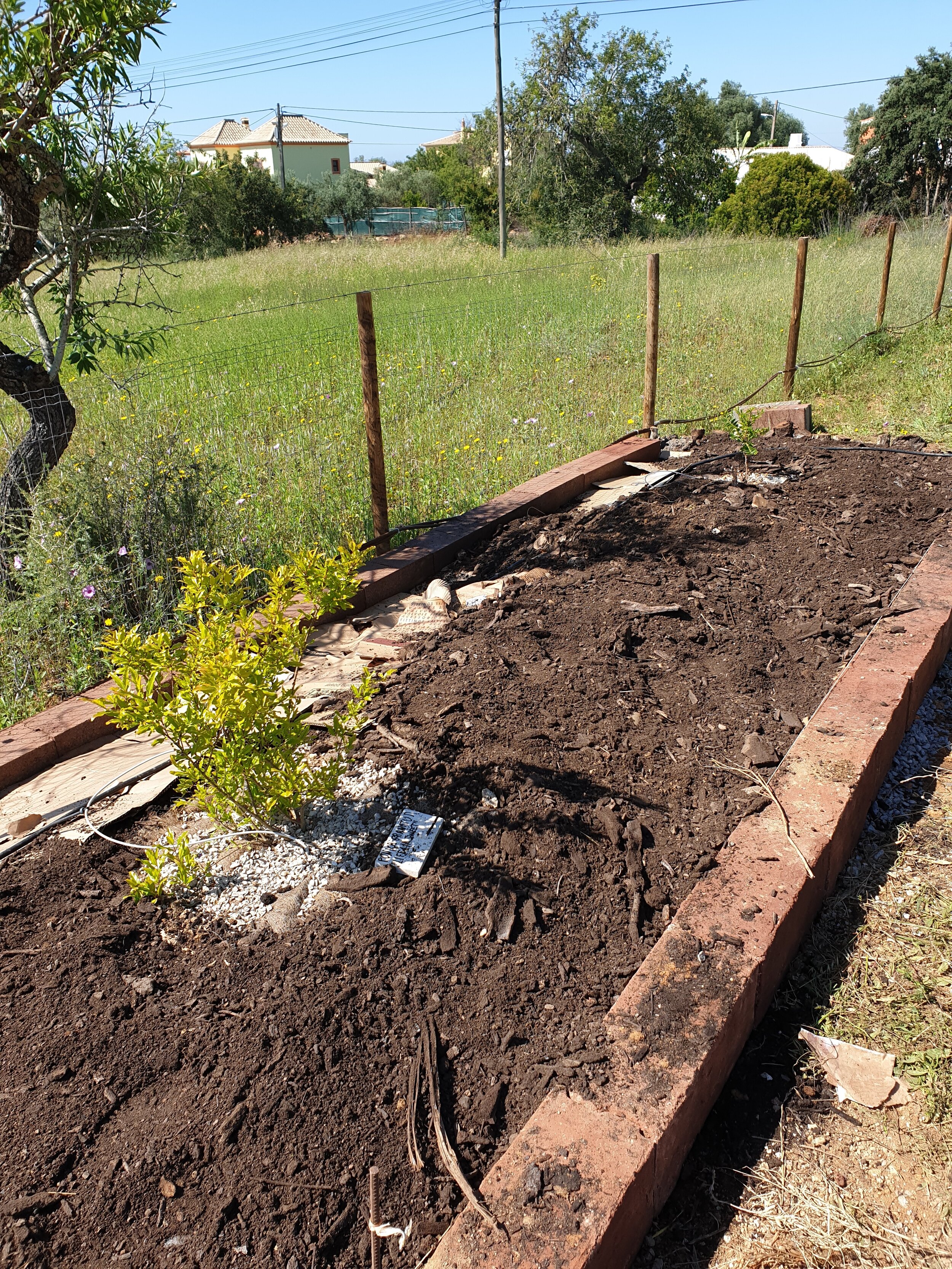
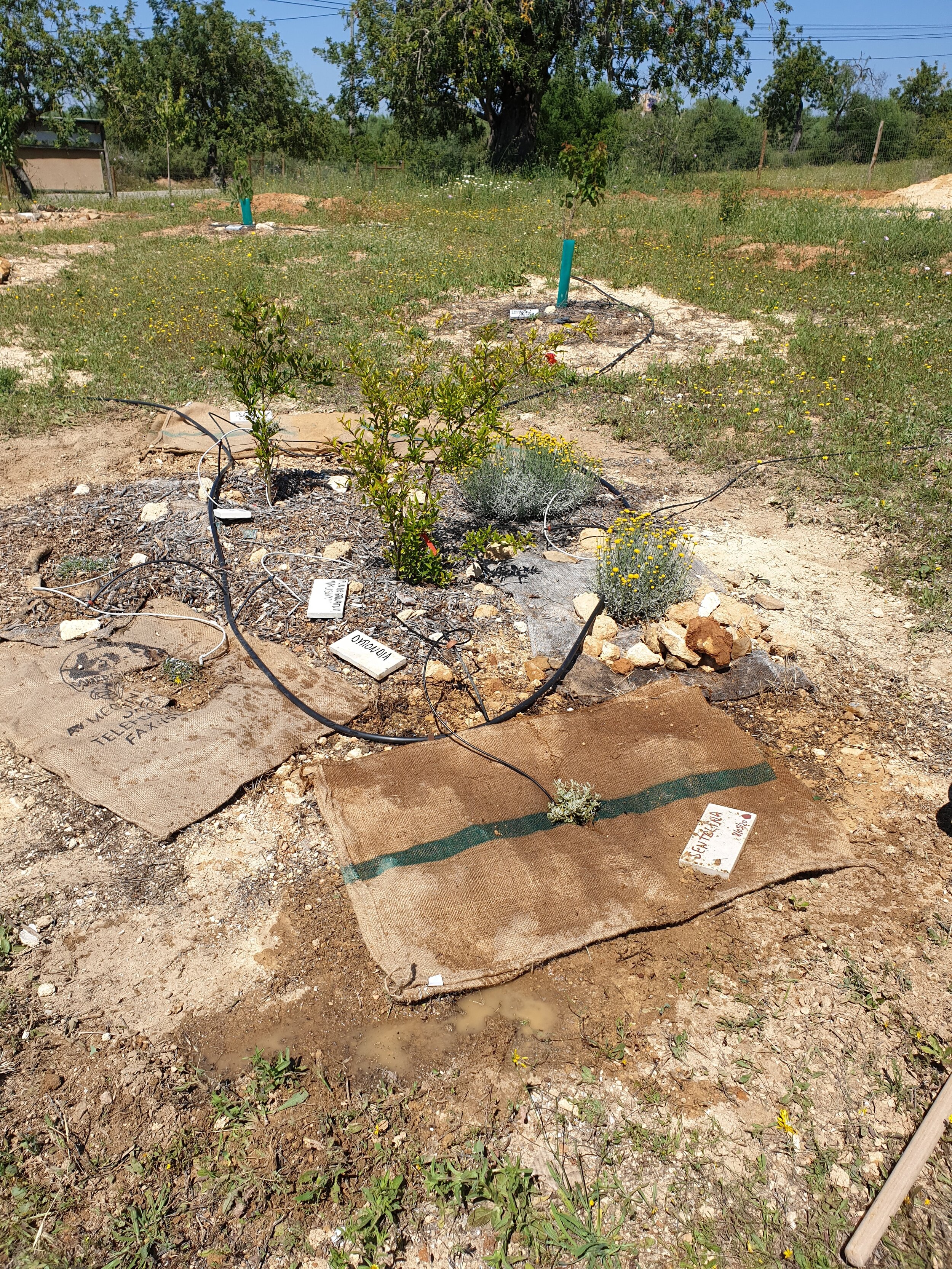
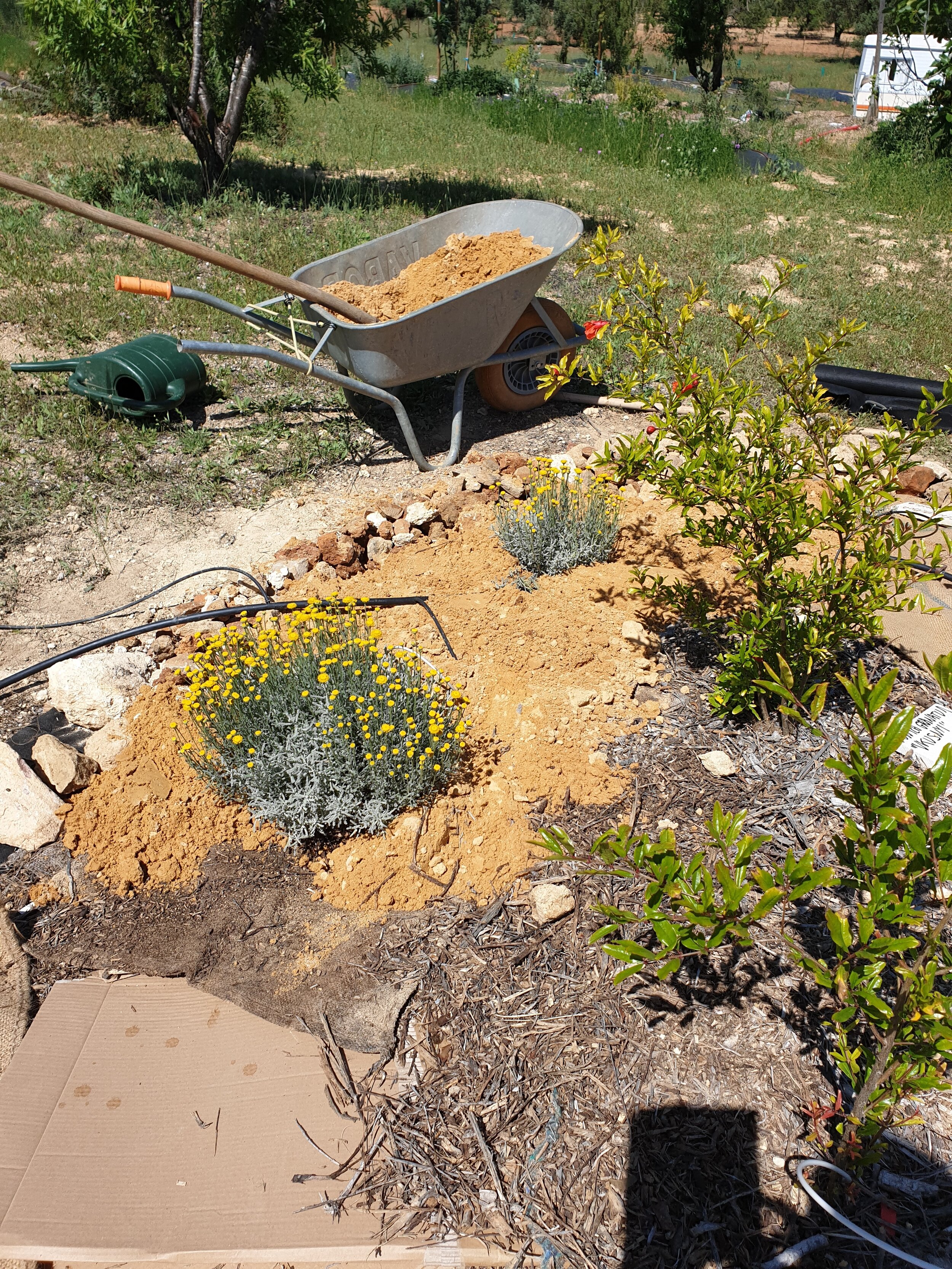
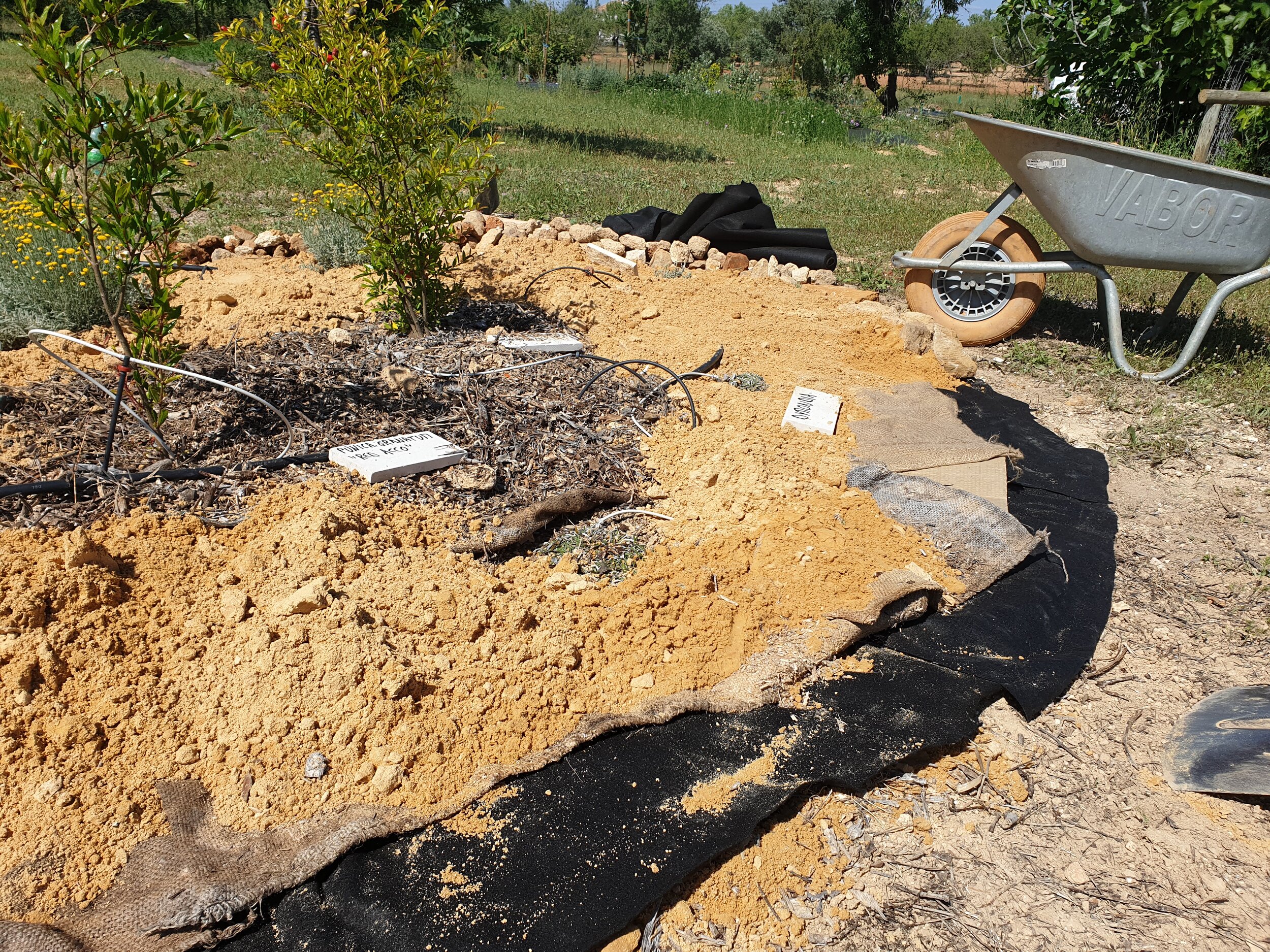
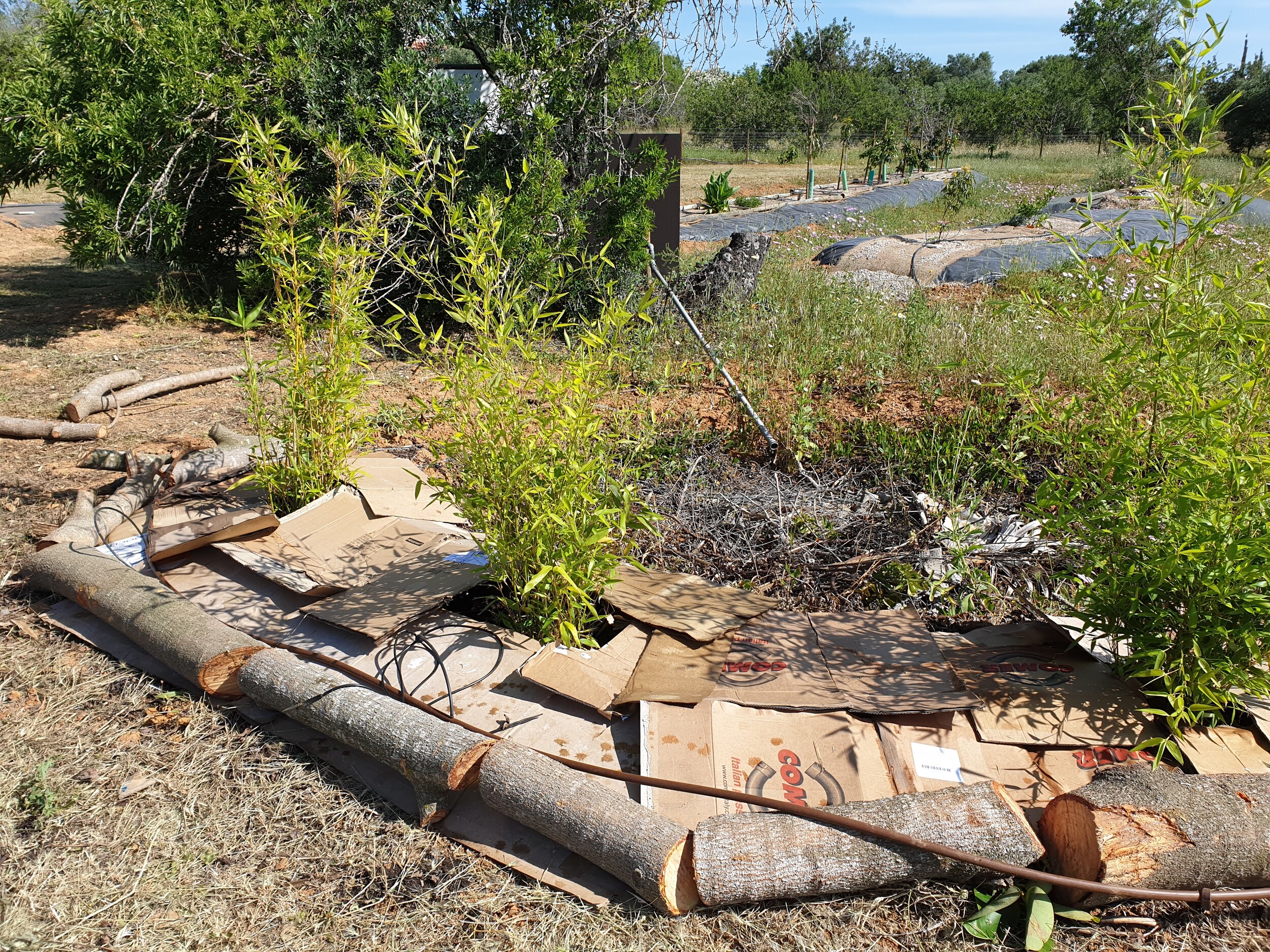
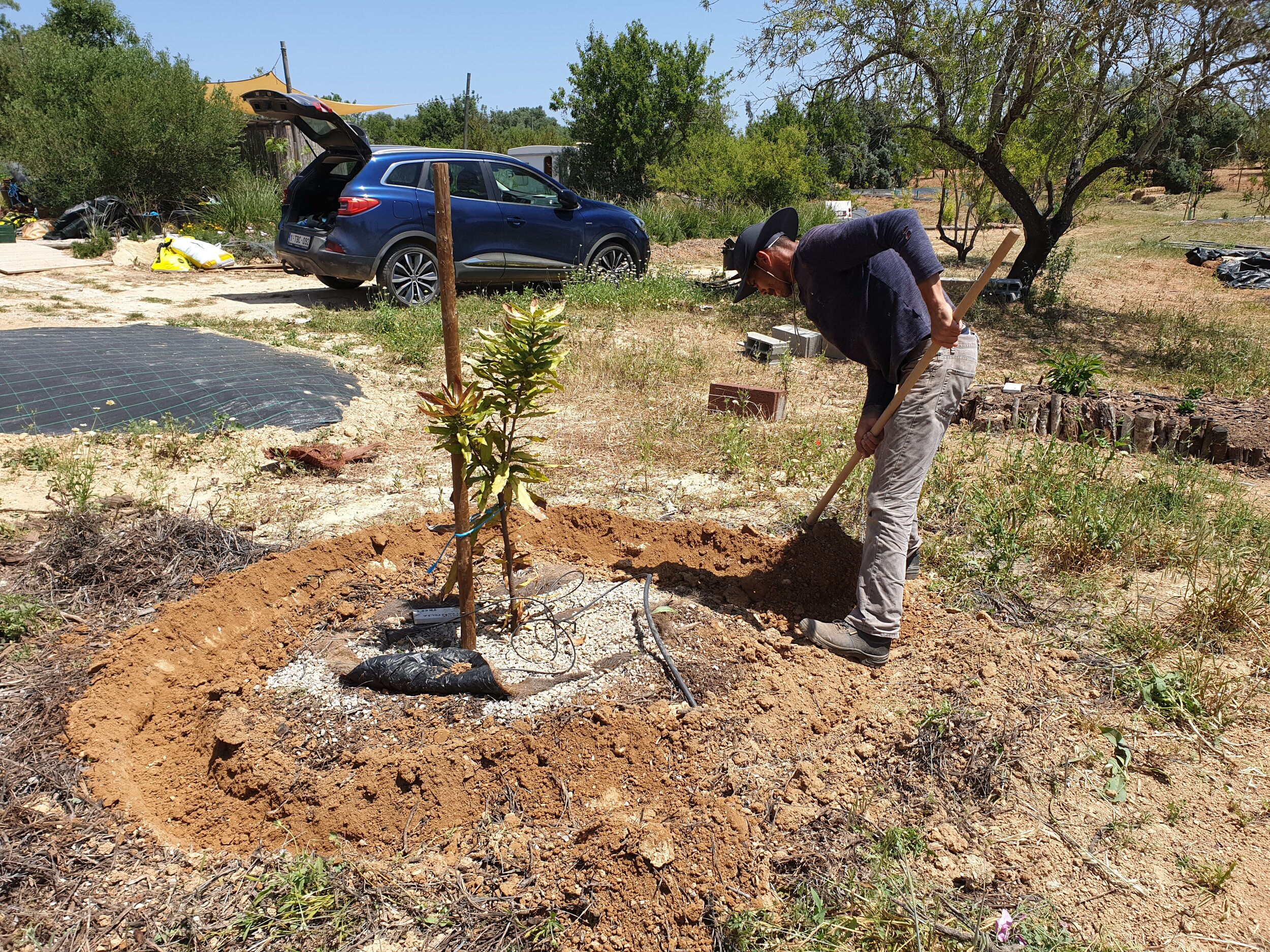
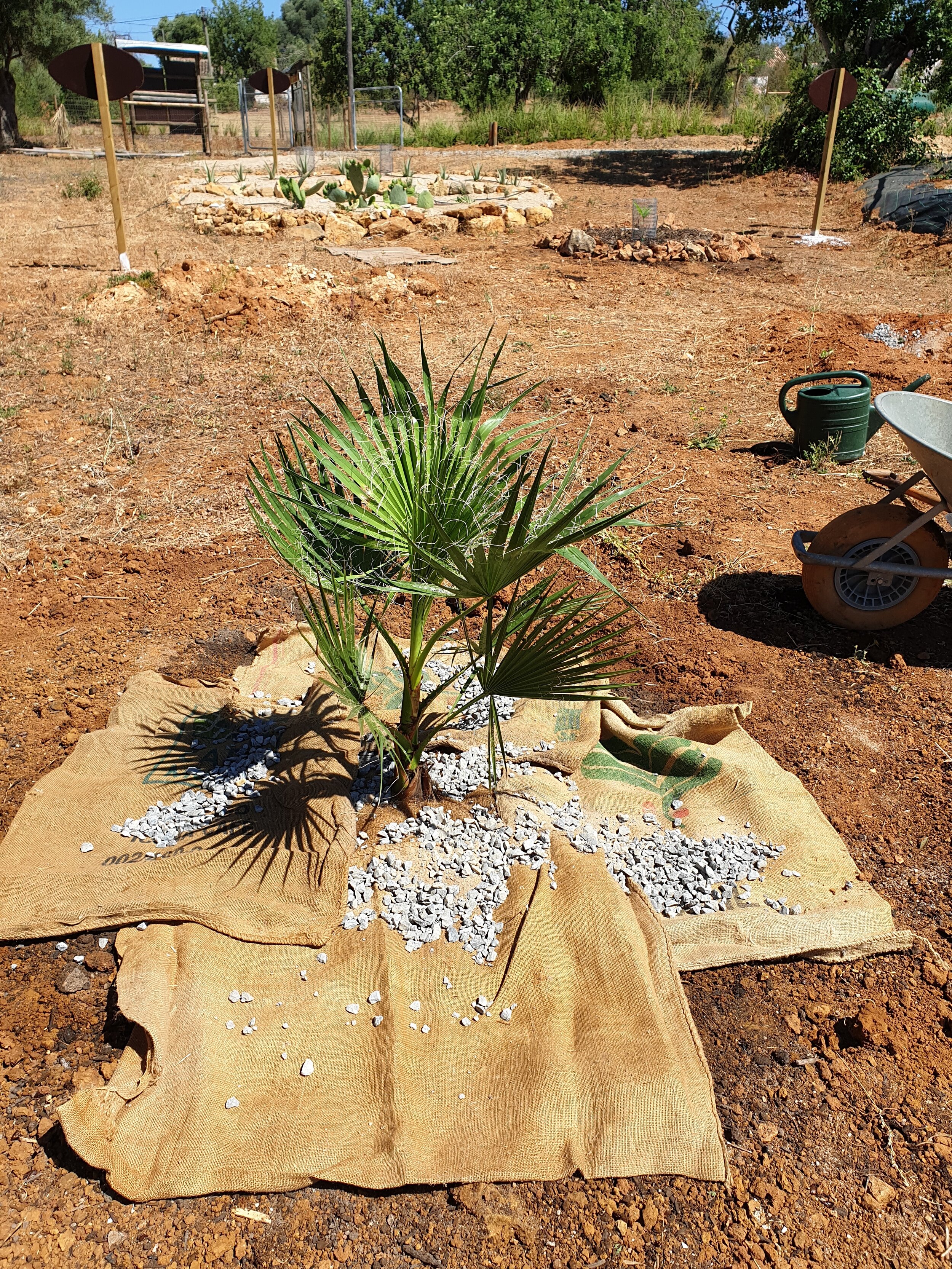
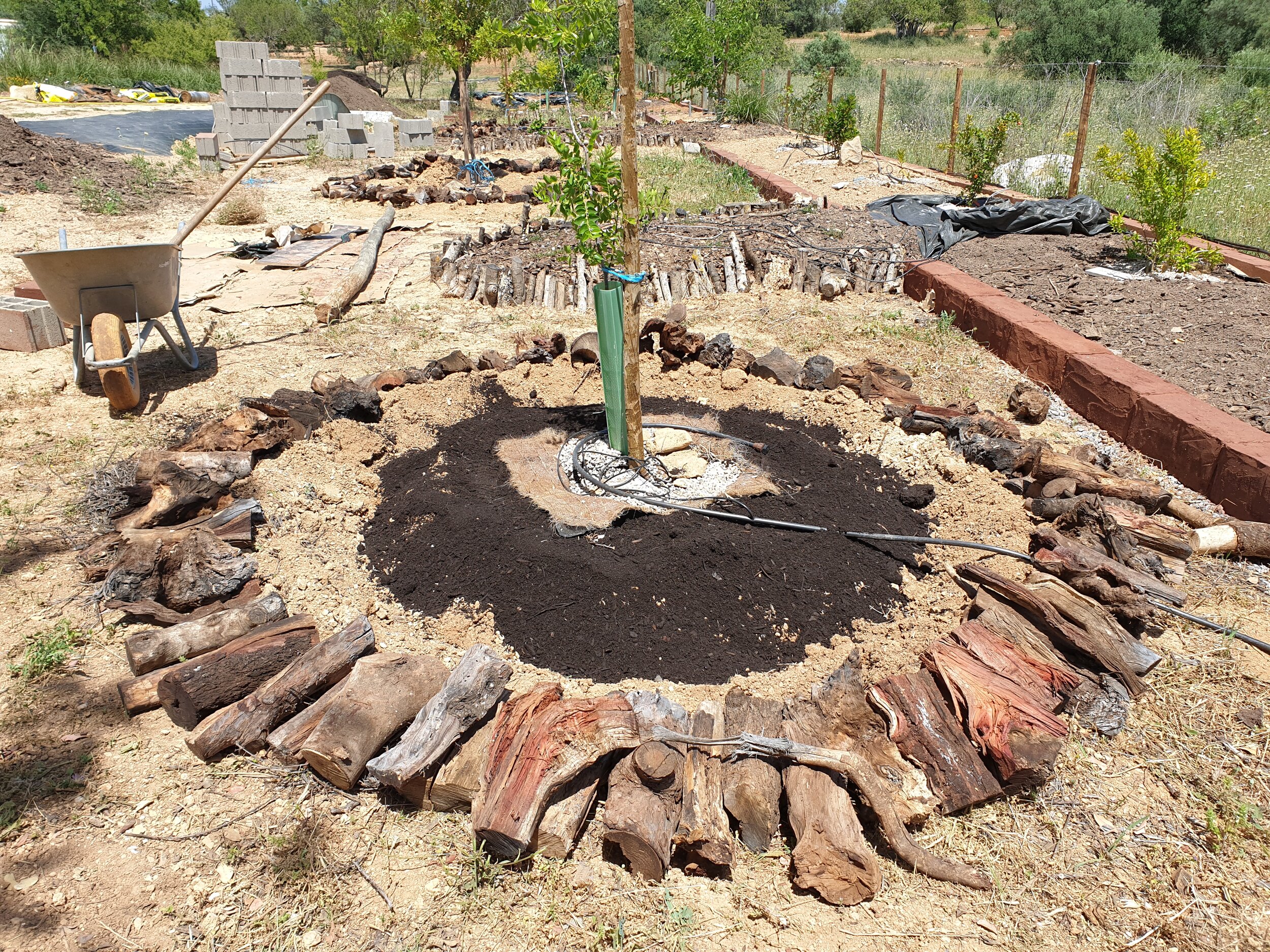
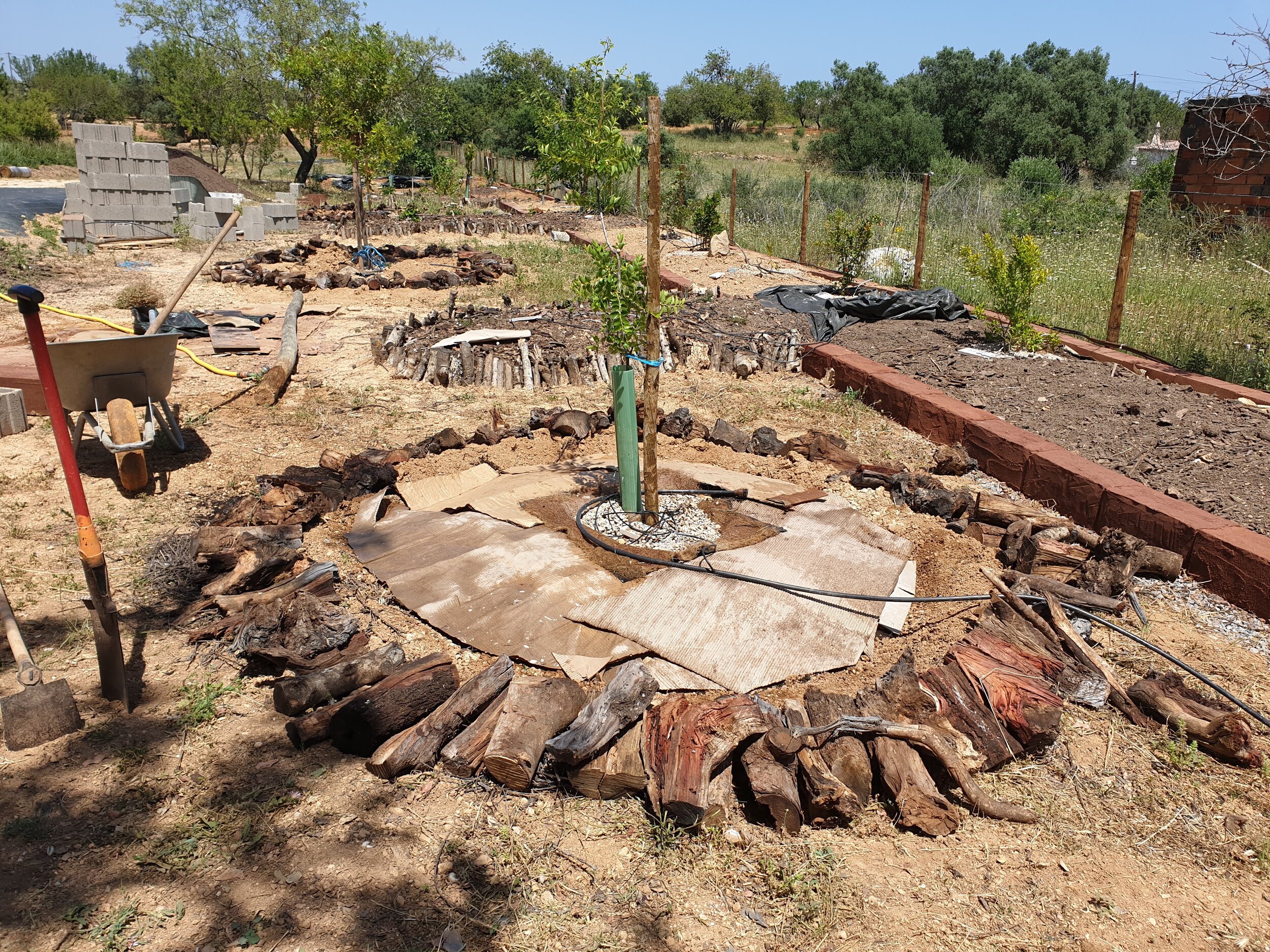

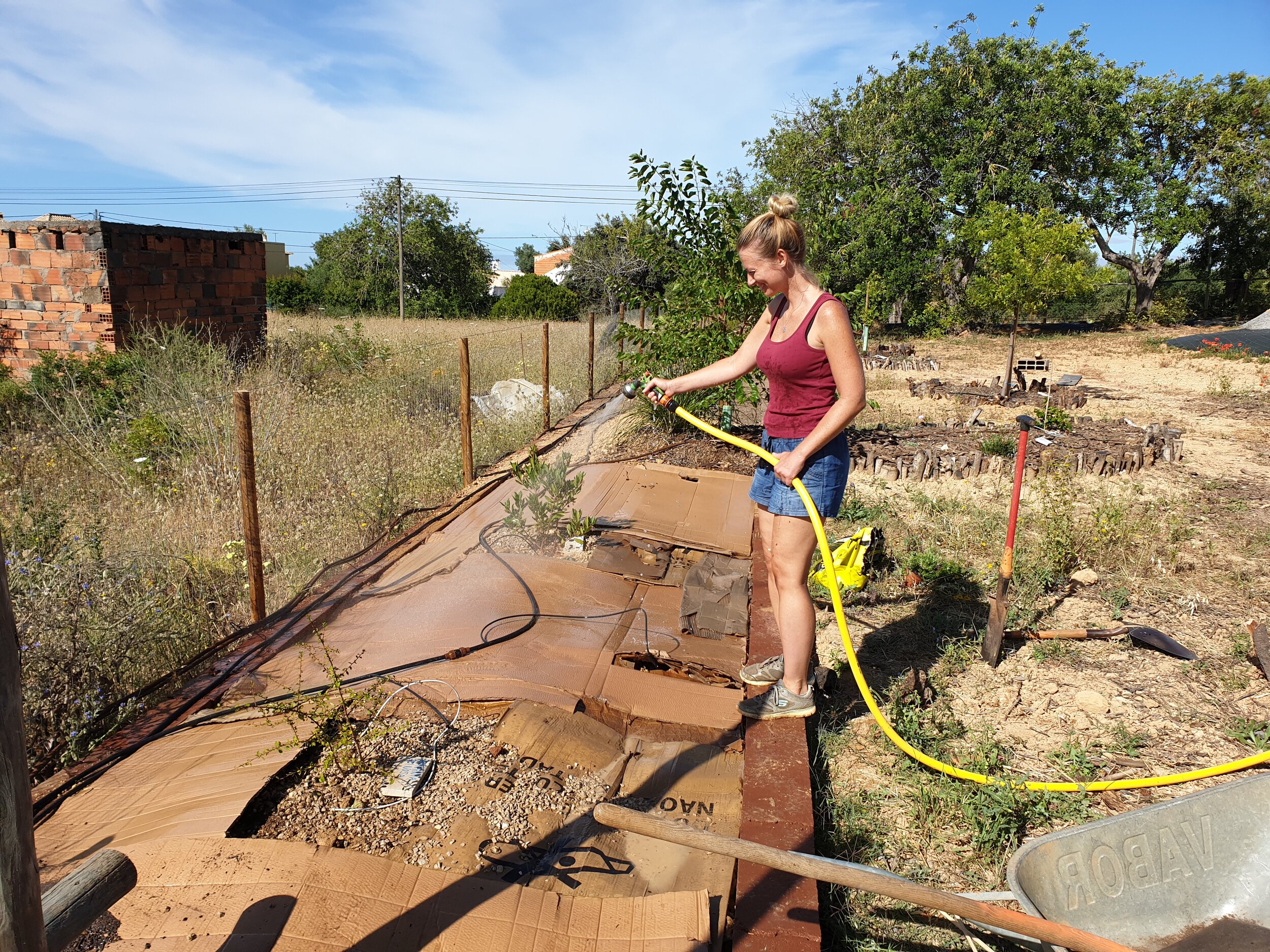
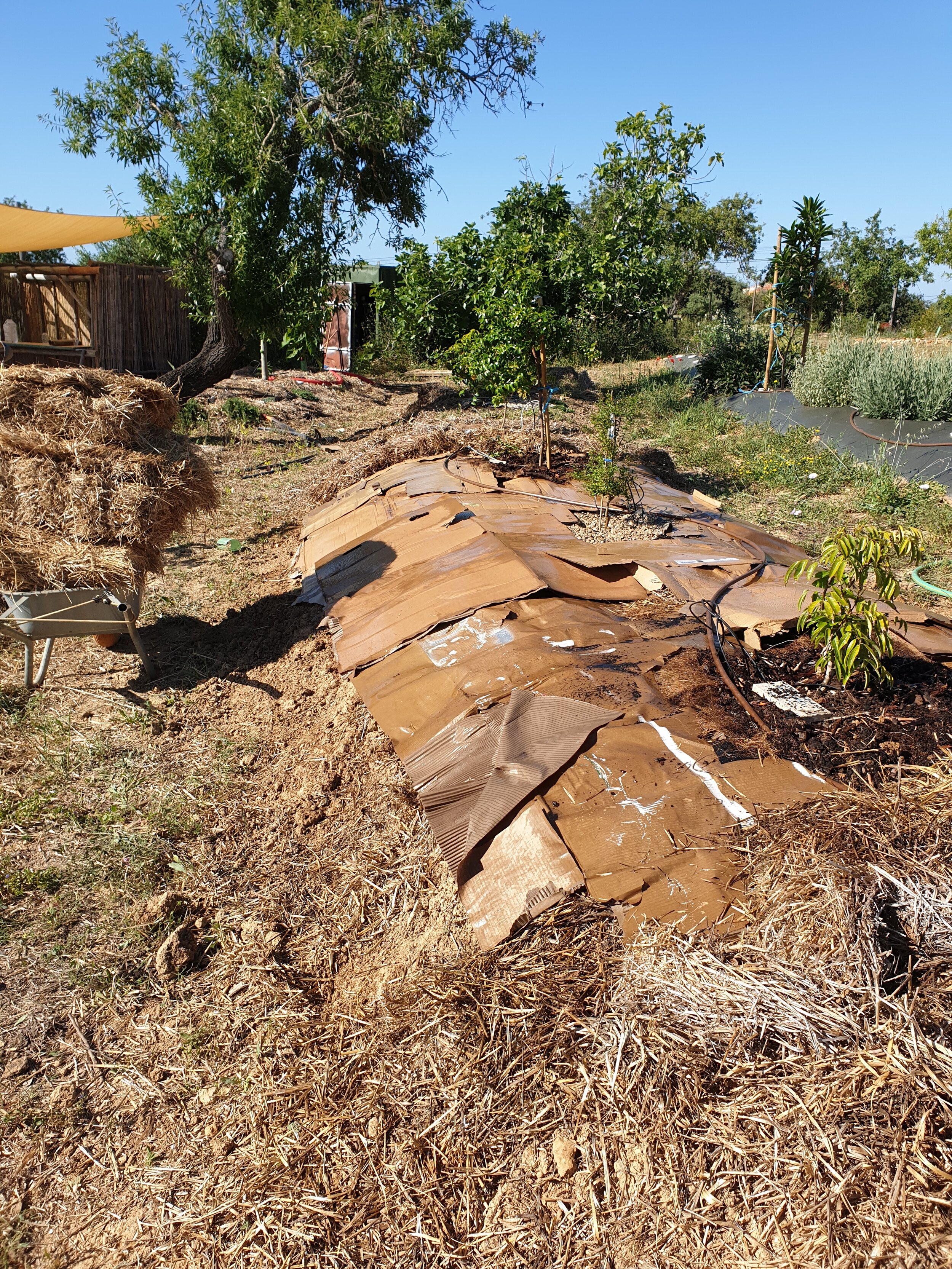
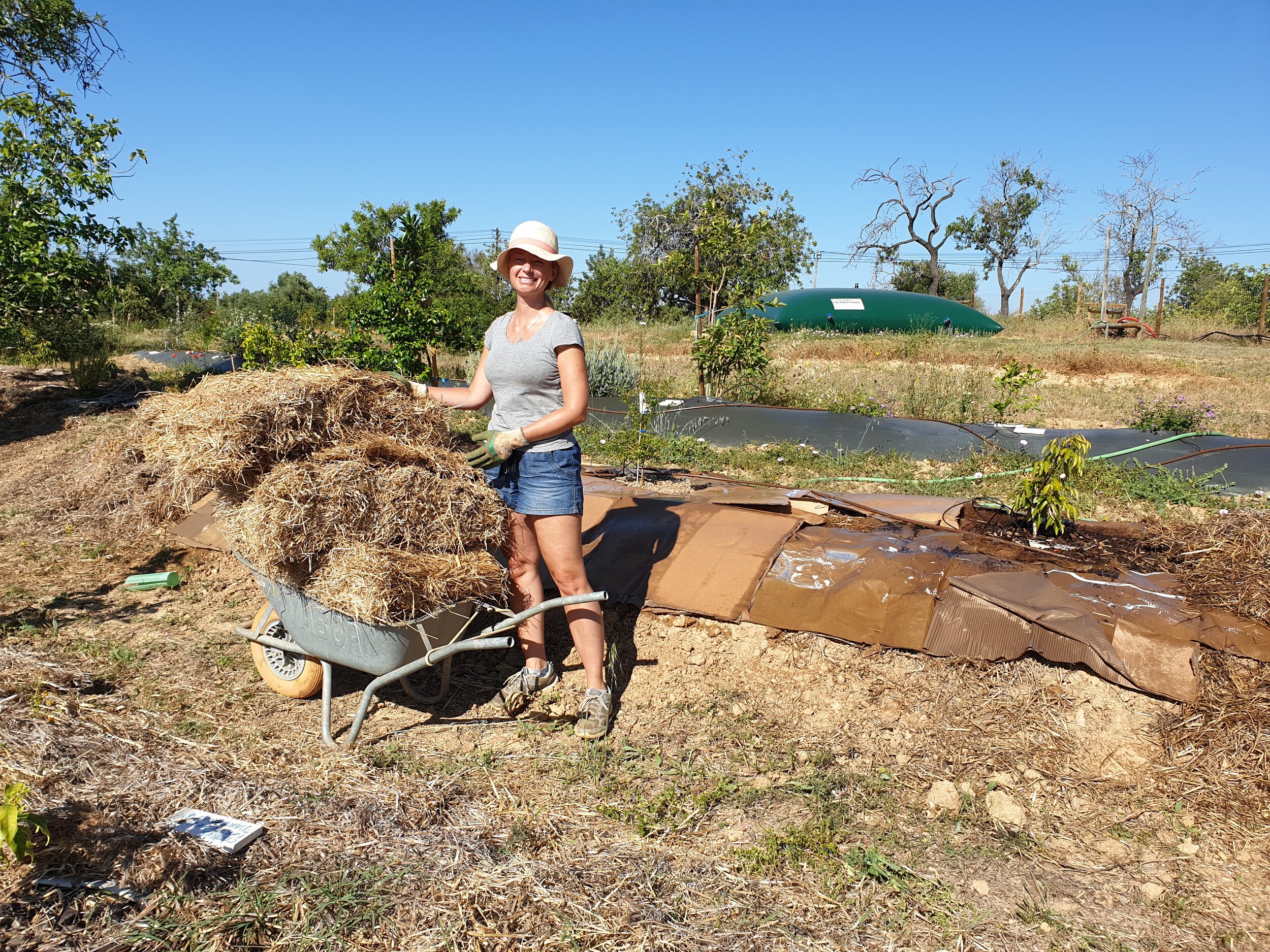
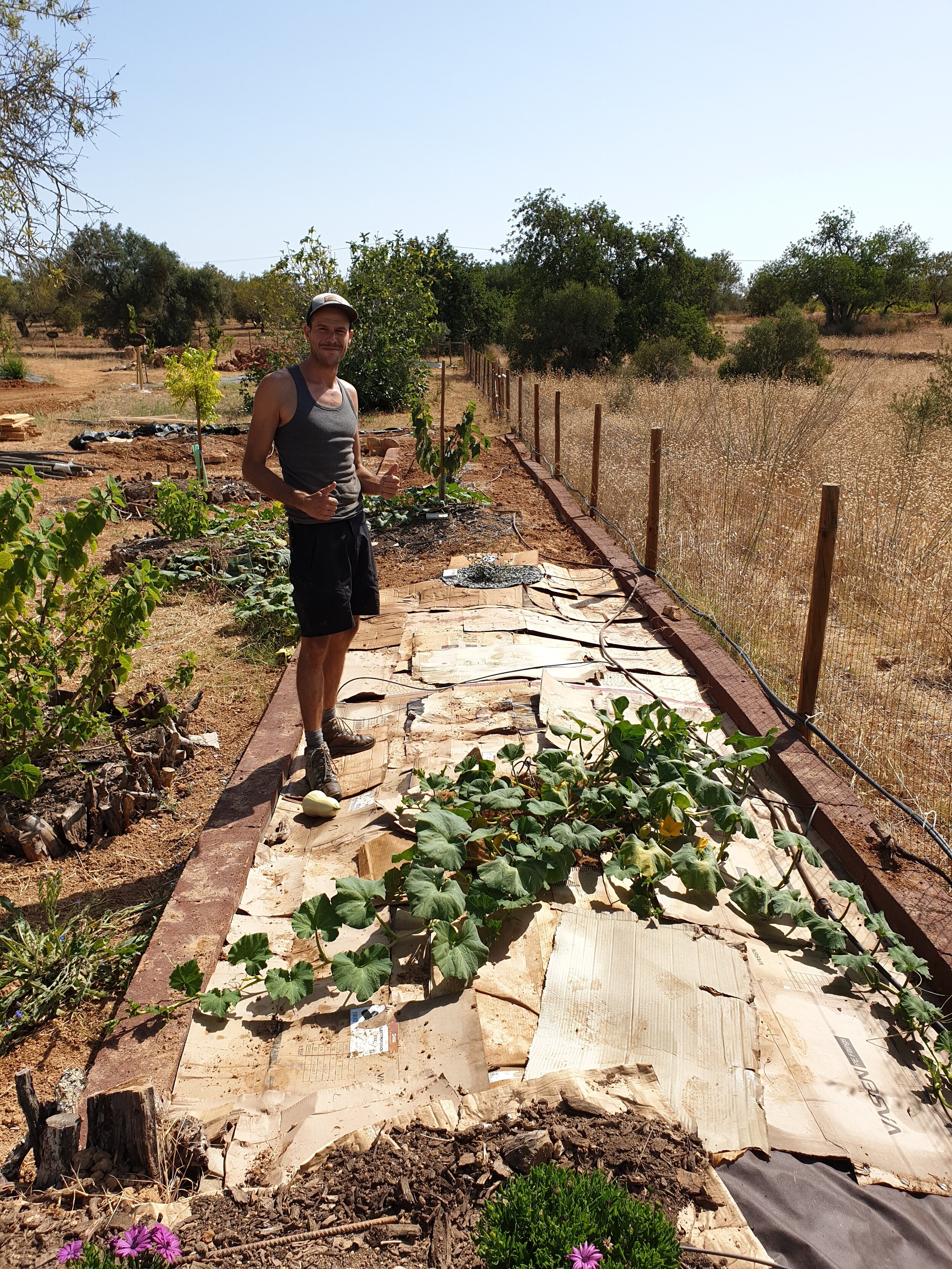
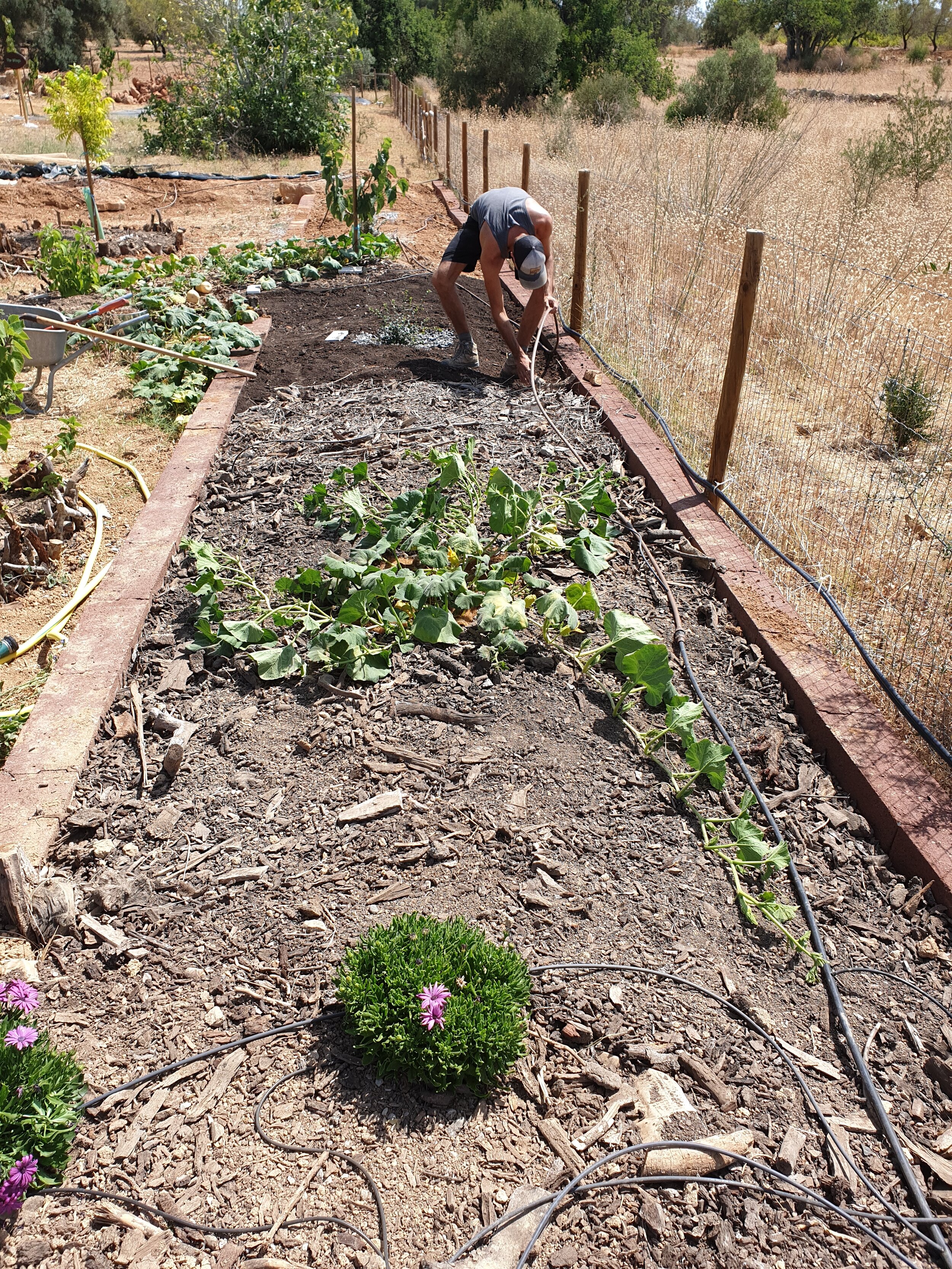
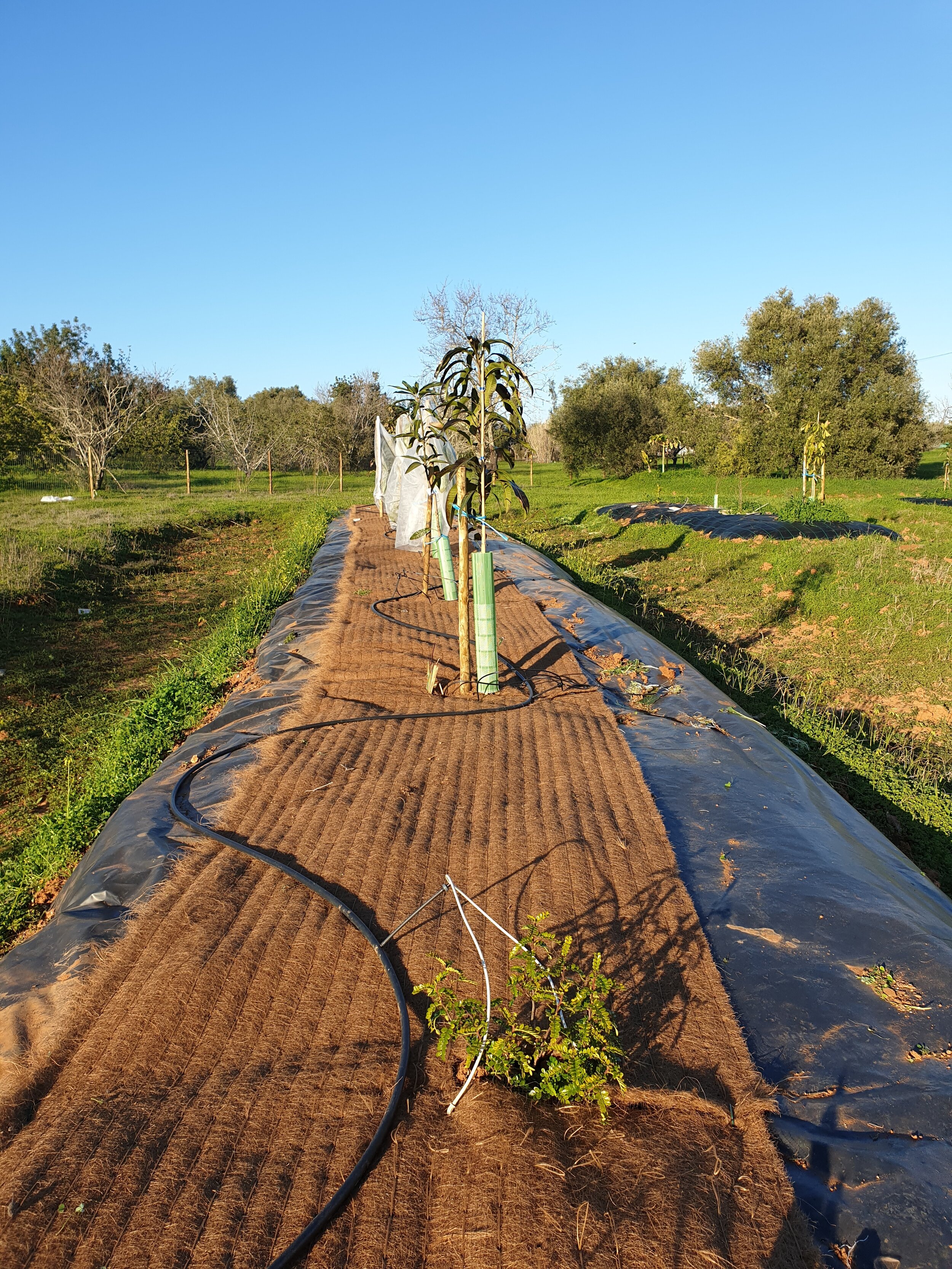

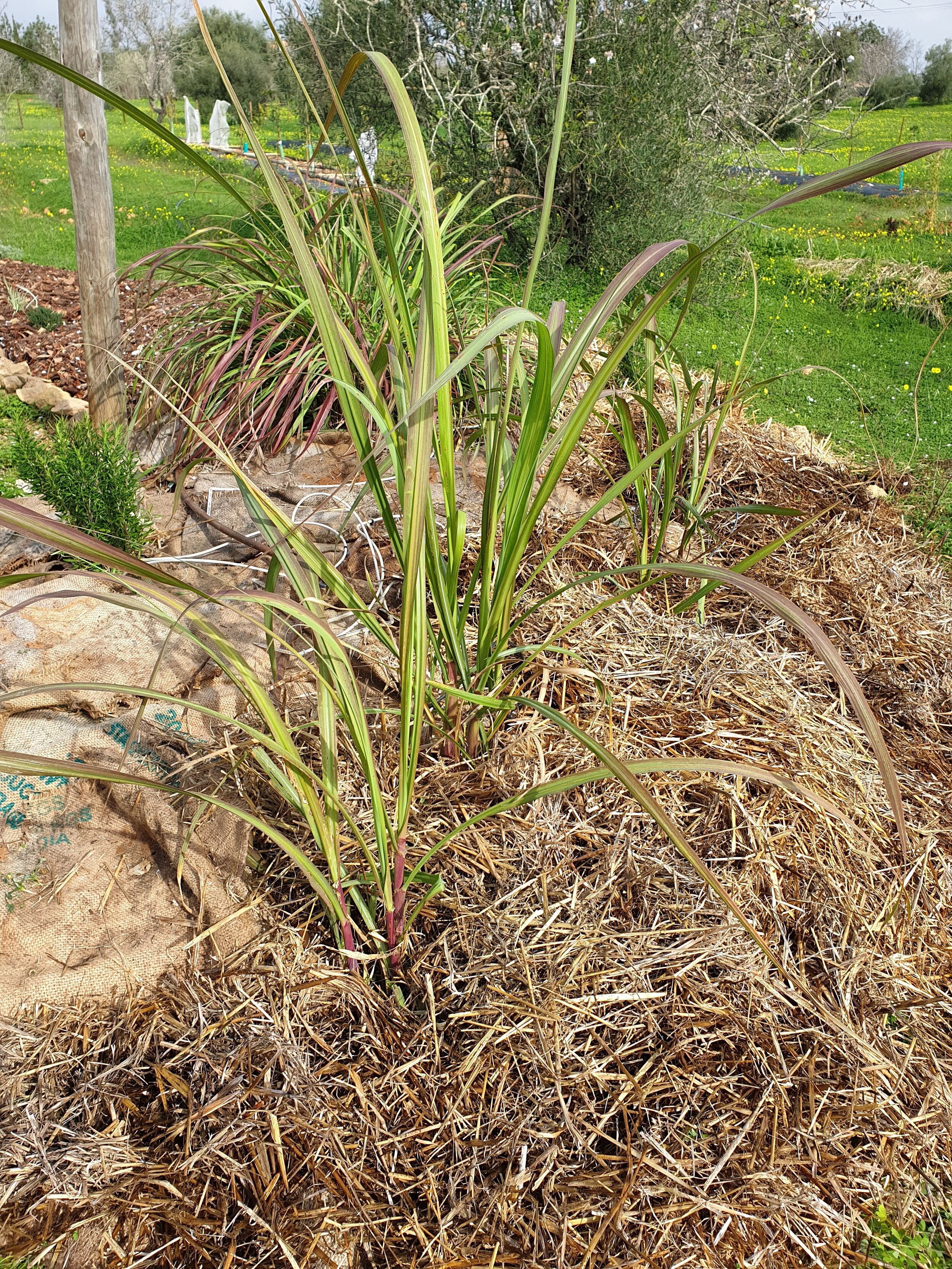
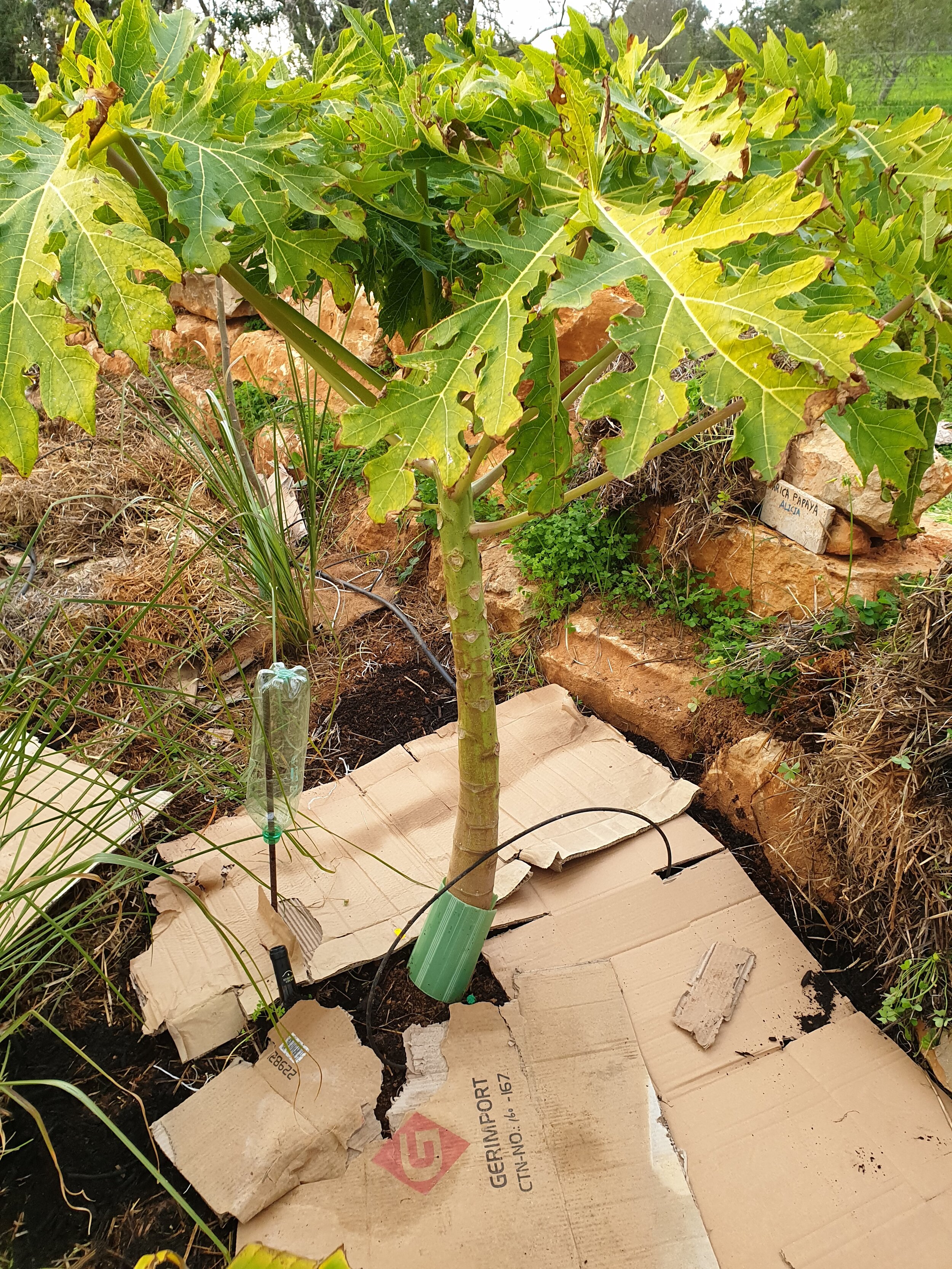

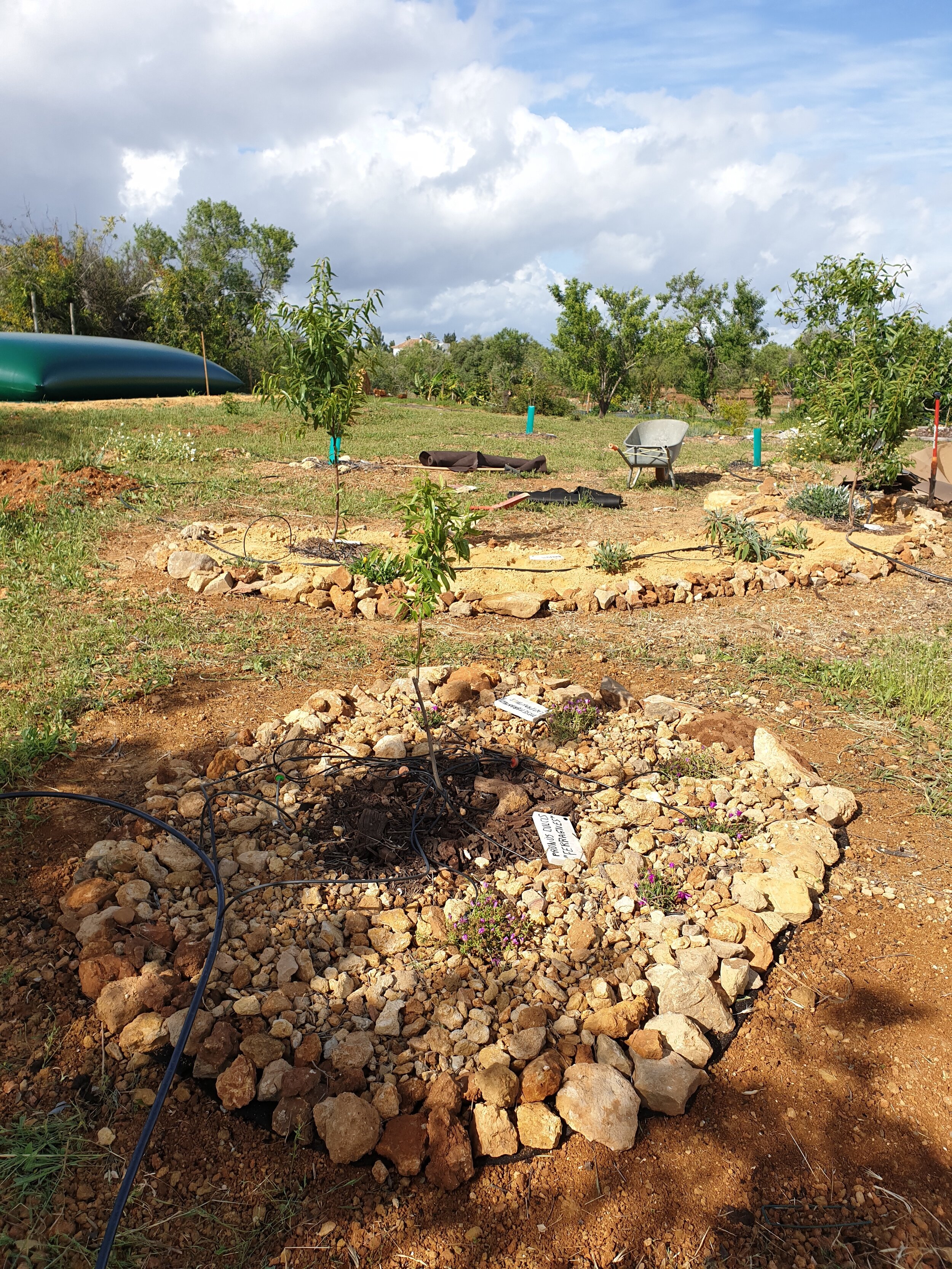
This article was compiled by Miguel COTTON & Jackson KNIGHTS. If you have any questions or suggestions, do not hesitate to contact us. miguel@orchardofflavours.com

